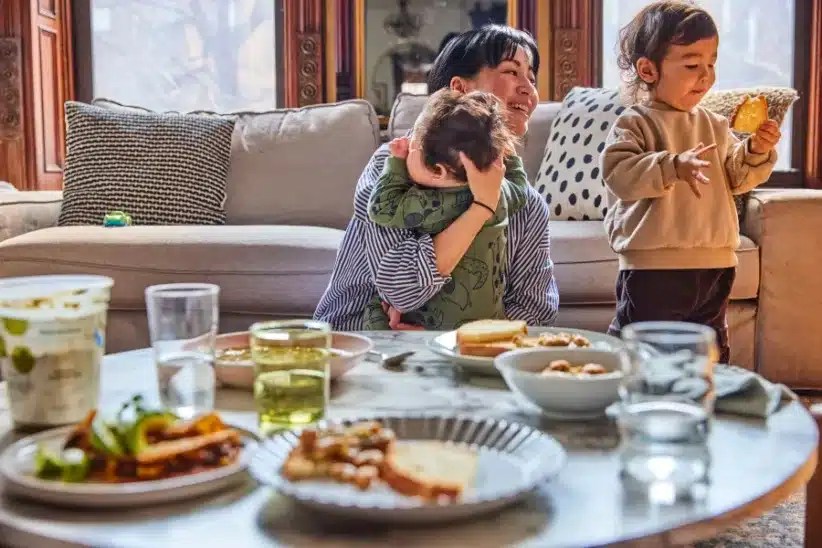When Gaylord Nelson, then a senator from Wisconsin, conceived the green movement back on the first Earth Day in 1970, chances are he never dreamed that the world’s largest garbage dump could one day be converted into — of all things — a 2,200 acre park three times the size of Central Park.
But that’s just what is happening, as plans have been in the works to convert the Fresh Kills Landfill on Staten Island into a park since shortly after its closure in 2001. It’s considered the largest landfill-to-park conversion in the country, according to the New York City Parks Department.
In fact, the re-christened it “Freshkills Park” — now in its planning stages — will be the largest park developed in New York City in more than 100 years.
Talk about restoring balance to nature.
“There’s been incredible investment by the city,” says Eloise Hirsh, the administrator of the park. “[It’s] great engineering on the part of the Department of Sanitation that really allows this place, which was a huge burden to Staten Island, to become a place that Staten Islanders can be proud of, and which people from all over the city and all over the world will want to come see.”
Five parks in one
The full project will take another 25 years to complete, but Freshkills Park is being transformed as we speak.
The plan is for its five main areas — The Confluence, the North Park, the South Park, the East Park and the West Park — to focus on programming (sports and recreational activities), wildlife (ecological restoration) and circulation (a massive network of paths, waterways and roads to and from the West Shore Expressway that will connect the entire park).
Hirsh says the park will have an emphasis on environmental sustainability. The Department of Sanitation is already harvesting methane gas from the decomposing refuse and selling it to National Grid. So far, it’s enough energy to heat 22,000 homes on Staten Island, and the city makes $12 million a year from the sale of the gas. That gas recovery and sale will continue until the amount of gas produced by the landfill is too small to sell, and then it will be burned off at flare stations on the grounds.
Staten Island Borough President James P. Molinaro has also proposed the construction of a wind farm at the site, calling the idea “economically and technologically sustain[able]” at the “only location in New York City” where such a farm could go.
Recreation and family life
The city’s plan for Freshkills Park is an ambitious one — it includes horseback riding, mountain biking, kayaking, picnic grounds and skate paths. Visitors will be able to travel through the park by bicycle, canoe, on horseback, on foot, or by car. Waterfront space will be converted into restaurants; a visitor center and a large event lawn will be available for formal gatherings. And if the borough president has his way, winter sports would be a big draw, too: he envisions mini ski slopes, where children could sleigh ride, tube sled, and learn how to ski.
“There are so many opportunities,” Molinaro says.
There have been some delays along the way. The area known as the Owl Hollow Soccer Field is reportedly sinking, and the Parks Department says it’s working with the contractor to solve the problem, despite ballooning costs.
Hirsh quips that while none of the specific plans are “moving quickly,” everything is headed in the right direction.
Come autumn, families can get their first glimpse of Schmul Park and Playground — scheduled to open in the Travis section of the site. It’s currently under construction, and when it’s finished, it will serve as an entry point to the park.
Is it safe?
Thousands of Staten Islanders have become curious about the plans, says Hirsh, turning out in droves to attend various events at the site.
Still, some may find the park concept difficult to embrace. Many residents can remember the sickening stench of Fresh Kills when it was at its peak — taking in 1,000 tons of garbage an hour — especially in the summer, when the refuse cooked in the hot sun.
Even the Borough President calls the transformation nothing short of incredible.
“This was a tragedy and a half,” he says, referring to the length of time the landfill remained open. “There was no permit at the time. There was no liner back then. This was a toxic waste dump … it’s almost a miracle. We’re taking the world’s largest landfill and turning it into the largest play land in the city. That’s amazing. If someone blindfolded you, and said we want you to guess where you are, you’d never guess. In some sections up there, you’ll see deer, all kinds of birds, rabbits. It’s incredible.”
While Hirsh agrees that the ecological landscape is undergoing a miraculous transformation (and she did confirm that deer have been spotted), she says nothing in the landfill was actually toxic, and that there were protective systems in place to deal with leakage back then. Now, there are more stringent regulations in place that the city must adhere to, before the public can have access to the site.
Currently, there are several layers of fill on top of the garbage that’s left. On top of those fill layers, sits an impermeable liner — a very thick cover that’s anchored over the fill.
“And then on top of that liner, there’s another two and a half feet of residential grade clean soil. That’s what the public will be walking on,” explains Hirsh.
But talk is cheap. For Staten Islanders to truly embrace this concept, she says, they need to see the beginning stages of the re-building for themselves.
Hirsh says that now, 10 years after the official closure of Fresh Kills, a tour could be eye-opening.
“The wildlife has come back,” she says. “It’s really a very eloquent statement about the power of nature.”
Bus tours of the site are available on select Saturdays at 10 am and 1 pm from April through November. For more information, visit www.nyc.gov/parks. To visit the Freshkills Park blog, visit freshkillspark.wordpress.com.
Monica Brown is a cable television anchor who lives on Staten Island with her husband and her two children. She can be reached at [email protected]
History
The Fresh Kills Landfill was opened by the city in 1948 with the promise that it would be in operation for three years. Fifty-three years later, it finally closed.
By 1996, as Staten Islander’s protest movement to close the dump had begun to grow, then-Borough President Guy Molinari filed a federal lawsuit against the city claiming the dump’s hills — widely believed to be viewable from space — violated the Clean Air Act because of the methane gas they were emitting.
Islanders rejoiced when a federal judge ruled that the landfill had to be closed by Jan. 1, 2002.
On March 22, 2001, Fresh Kills took in its last load of city waste. After the terrorist attack on Sept. 11, 2001, a portion of the area was used as a sorting ground for rubble left in the attack’s wake.






















